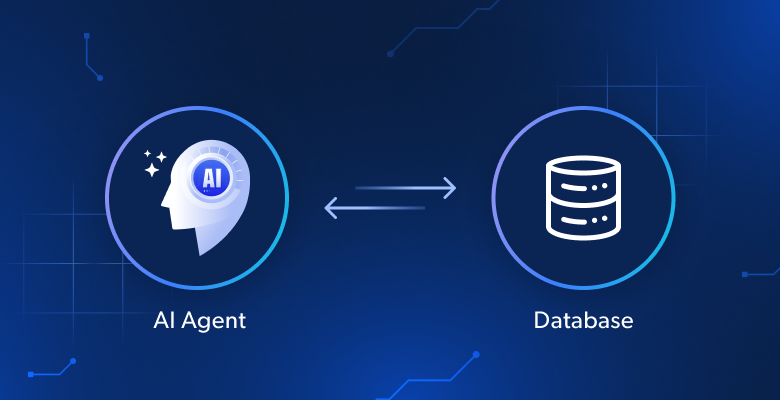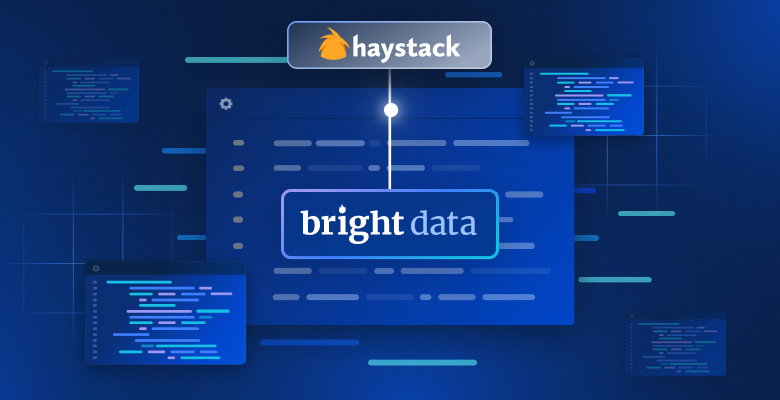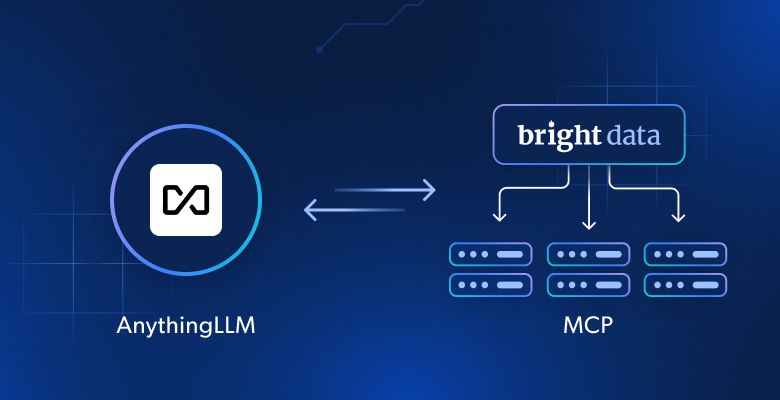Web scraping is one of the hottest terms in the IT community, but what is it actually about?
This guide will answer that question by covering:
- What is web scraping?
- Is web scraping legal?
- Web scraping use cases
- How a web scraper works
- Main challenges in scraping the web
- How to avoid any blocks with proxies
Let’s dive in!
Web Scraping Explained
Web scraping refers to the process of extracting data from websites. Once collected, this information is generally exported to more useful formats, such as CSV or JSON. In most cases, CSV is the preferred format, as it can be explored in spreadsheets even by non-technical users.
Technically, web scraping can be performed even by manually copying and pasting information from web pages. However, this approach is time-consuming and cannot be applied to large projects. Instead, web scraping is mostly accomplished using automated software tools called web scrapers. Their goal is to gather data from the Web and convert it into a more structured format for you.
There are several types of web scrapers, each meeting different needs:
- Custom scripts: Programs created by developers to extract specific data from some specific sites. These are the most popular types of web scrapers. These often use Python for the scraping process.
- Browser extensions: Add-ons or extensions that can be installed in web browsers to allow users to retrieve data from a page as they navigate.
- Desktop applications: Standalone software applications installed on a computer that offer an easy-to-use UI and advanced features to visit web pages in a local browser and get data from them.
- Cloud-based services: Web scraping services hosted in the cloud that users can access and configure to achieve their data extraction goals.
Regardless of the scraper chosen, collecting online data from the Internet is not an easy task. This is due to the many challenges those tools have to face. But do not worry, we will delve into this topic more in detail later on. For now, just keep that in mind.
Web Scraping Use Cases
Data is more valuable than oil, and what better source to retrieve useful data than the Web? That is why so many companies in a variety of industries use information retrieved from web scrapers to fuel their business processes.
There are dozens of possible web scraping use cases, but let’s focus on the most common ones!
Price Comparison
The idea here is to use a web scraper to get product prices from multiple retailers and e-commerce platforms to compare them and make informed purchasing decisions. This helps to find the best deals, save both time and money, and monitor competitors’ pricing models.
Market Monitoring
With web scraping, you can monitor market trends, product availability, and pricing fluctuations in real time. This gives businesses the opportunity to stay up-to-date and react promptly to the market. Such a data-driven approach enables companies to devise new strategies quickly, seize opportunities, and respond effectively to new user needs.
Competitor Analysis
By extracting information about competitors’ products, pricing, promotions, and customer reviews, companies can gain insights into their rivals’ strengths and weaknesses. Programming scrapers to take screenshots of their sites and marketing campaigns further enhance this analysis, allowing businesses to craft plans aimed at outperforming competitors.
Lead Generation
Web scrapers have changed lead generation forever. This task used to take months and a lot of manual effort, but now you can automatically extract public contact information, such as e-mail addresses and phone numbers, from various sources in minutes. Building a database of potential leads has never been easier.
Sentiment Analysis
Web scraping facilitates sentiment analysis by allowing large amounts of usage feedback to be retrieved from review platforms and public social media. With this data, companies can gauge public opinion about their products, services, and brand. Understanding what people think helps improve customer satisfaction and proactively address new issues.
How a Web Scraper Works
The way a web scraper manages to retrieve data from a site depends on the:
- Nature of the target site: Static-content sites can be scraped with any HTML parsing libraries, while dynamic-content sites require a web browser.
- Type of web scraper: Different scraping technologies require different approaches.
Trying to generalize how a web scraper works is not easy, but there are some common steps that any web scraping process needs to perform. Here they are:
- Connect to the target site: Use an HTTP client to download the HTML document associated with a page of the destination website, or instruct a controllable browser to visit a particular page.
- Parse or render the page: Feed the HTML content to an HTML parser and wait for it to complete the operation, or wait for a headless browser to render the page.
- Apply the scraping logic: Program the web scraper to select HTML elements on the page and extract the desired data from them.
- Repeat the process on other pages: Programmatically discover URLs of other pages to scrape and apply the steps before to each of them. This is called web crawling and is used when the data of interest is spread over multiple web pages.
- Export the scraped data: Preprocess the collected data to make it ready to be transformed into CSV, JSON, or similar formats. Then export it to a file or store it in a database.
After creating a web scraper or defining a task in a web scraping tool, you can typically launch it locally, deploy it on a server, or schedule it to run in the cloud.
Main Challenges in Scraping the Web
As mentioned before, web scraping is not easy. Why? For numerous reasons.
First, the data extraction logic depends on the HTML structure of the pages. This means that every time a site changes its user interface, this could affect the HTML elements that contain the desired data, forcing you to update your web scraper accordingly. There is no real solution to this problem. The best you can do is to use smart HTML element selectors that remain effective even after small UI changes.
Unfortunately, the real challenges are others and are much more complex than maintenance. Let’s dig into the real web scraping challenges!
Second, most sites are aware of the scraping threat and protect their data with anti-bot technologies. These systems can identify automated requests and stop them, preventing your web scrapers from accessing the site. Thus, your web scraper is likely to run into the following obstacles:
- IP bans: Many servers track incoming requests to look for suspicious patterns. When they detect requests from automated software, they blacklist their IP for a few minutes or even forever. This blocks automated requests before they can access their pages.
- Geo-restrictions: Some countries have an internal firewall to prevent their citizens from accessing external sites. Similarly, foreigners cannot access all of their sites. In addition, some web pages change their content based on the user’s location. All this makes scraping those websites a hard task.
- Rate limiting: When a web scraper makes too many requests in a short amount of time, it might trigger advanced DDoS attack defense or simple IP bans to avoid flooding the servers.
- CAPTCHAs: If a user shows suspicious behavior or their IP reputation is low, some websites display CAPTCHAs to check if they are real human users. Solving them in the code is difficult, if not impossible, so they can block most automated requests.
Bypassing the above anti-scraping measures requires sophisticated workarounds that usually work inconsistently or only for a short time before they are addressed. These obstacles compromise the effectiveness and stability of any web scraper, regardless of the technology used.
Fortunately, there is a solution to this problem and it is called a web proxy!
How to Avoid Any Blocks With Proxies
A proxy server acts as an intermediary between your scraping process and the target sites. It receives your requests, forwards them to the destination server, receives the responses, and sends them back to you. The site will then see your requests as coming from the proxy server location and IP, not from you. This mechanism allows you to hide your IP, preserve its reputation, and save your privacy by preventing fingerprinting.
The best scraping proxy providers offer a wide network of proxy servers spread around the world to allow you to overcome any geo-restrictions by using IPs from different countries. By rotating requests over different proxies, your scraper can appear to the server as a different user each time, fooling advanced rate-limiting and tracking systems. In short, proxies enable you to overcome the most significant challenges in web scraping!
No matter what your scraping goal is, your web scrapers should always rely on some proxies to avoid blocks and ensure high effectiveness.
Conclusion
In this article, you learned what web scraping is, what it is used for, and how it works. Specifically, you now know that this mechanism involves retrieving data from web pages through automated software. As seen here, this online data extraction process is applicable to many scenarios and is beneficial to a wide range of industries.
The main challenge is represented by all the technologies websites adopt to prevent web scraping and protect their data. Fortunately, you can bypass them all with a proxy. Since there are dozens of proxy providers online, you can save time by trying them all and go straight for the best provider in the market, Bight Data!
Bright Data controls the best proxy servers in the world, serving tens of Fortune 500 companies and over 20,000 customers. Its wide proxy network includes:
- Datacenter proxies – Over 770,000 datacenter IPs.
- Residential proxies – Over 150M IPs from residential devices in more than 195 countries.
- ISP proxies – Over 700,000 ISP IPs.
- Mobile proxies – Over 7M mobile IPs.
Overall, this is one of the largest and most reliable scraping-oriented proxy networks on the market. But Bright Data is more than just a proxy provider! It also offers top-notch web scraping tools, including a Scraping Browser, a Web Scraper API, and a SERP API.
If do not want to deal with scraping at all but are interested in web data, you can take advantage of its ready-to-use datasets.
Not sure which product you need? Register now to find the best product for your business needs.







